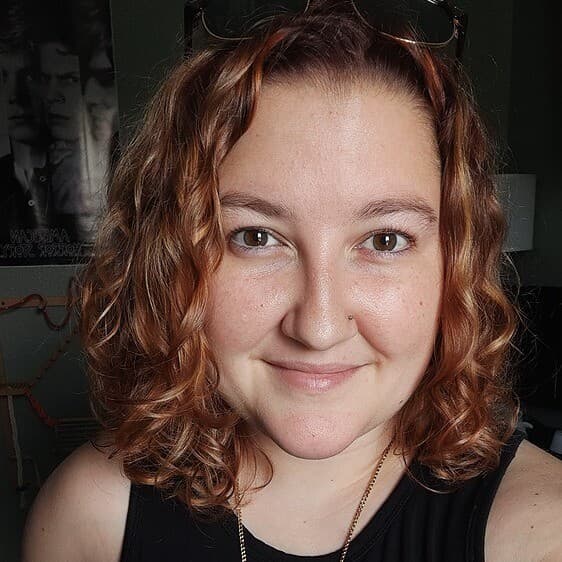Breaking And Entering: How To Get A Job In Animation

Breaking And Entering: How To Get A Job In Animation

I got my first internship in the animation business in 1998 and was hired full time as a production assistant for Walt Disney Feature Animation in 1999. I have worked relatively steadily in the animation industry ever since. One question I am often asked is, “How can I break into the animation industry?” Well, I’m not going to sugar coat it and say, “Just follow these simple steps, and you too can be living the dream in the magical world of animation!” The truth is, just like any endeavor, there are several different ways to accomplish your goal. However, the animation business is a tough nut to crack, and you need to be even tougher to break it open. In fact, toughness is one of the three T’s that you need to break into this business, the others being Tenacity and Talent.
Toughness, Tenacity, and Talent (in no particular order), and plenty of each are the most important qualities you’ll need to pull from, not only to get into the animation industry, but to thrive in it as well. While those qualities are necessary and will serve you well as you search, you also need a plan. You need to understand the needs of the studios you’re applying for, and you need to be able to show them why you’re the best person to fill that need. You also need to find the way in. This is true throughout the entertainment industry, but it feels especially prevalent in animation. There is no shortage of Gatekeepers guarding every imaginable portal, making it even more difficult just to get the opportunity to show what you can do. Many people get frustrated and give up before they ever even get the chance.

Talent
First and foremost, the animation industry is populated by some of the most talented artists in the world. That is not a hyperbolic statement. Walk the halls at Disney or DreamWorks or Pixar and you will be treated to seeing visual development art, character designs and other artwork that is simply breathtaking to see. Many of the artists creating this work have been drawing and painting since they were children and then they attended the best art schools in the world. Matching that level of talent will be necessary if you want to join those ranks.
I spoke with Jessica Carbonaro, who has worked as a recruiter for DreamWorks Animation, Skydance Animation, and Netflix Animation, and I asked her what she and other recruiters look for in demo reels and portfolios.
“We look for quality over quantity,” she told me. “We want to see your best work represented. Show us what really shows off your skills and style. Don't worry if you are just getting started in the industry and don't have a lot to put in your reel/portfolio yet. That's ok. We get it. We would rather see a few good pieces then a lot of not so good pieces.”
It sounds simple, and it can be, but a lot of artists overthink their reels and portfolios. They think that loading it up with everything they’ve ever done is the best way to demonstrate their work when that is simply not the case. Recruiters get hundreds of portfolios and demo reel submissions every year, and they simply don’t have time to turn through and evaluate every single drawing or every single shot you’ve ever created. It’s way better to show five drawings or a minute and a half worth of material that demonstrates your absolute best work and shows what you’re capable of than to add an additional ten drawings or two minutes of reel that you like but could have been better. It is also extremely important to focus your portfolio on the type of job you’re looking for. For example, don’t put a bunch of effects work on your reel if you’re applying to be a character animator.

Carbonaro continues, “Make it easy for recruiters to understand what area you are most interested in, show the work that best represents you and make sure to highlight what work is yours if you are showing work that other artists worked on as well. Don't be afraid to add some variety into your reel/portfolio either, show some thumbnails, sketches, or a variety of acting depending on your discipline.”
Your demo reel is your calling card. It is how you introduce yourself to what you hope to be your future employer. You need to do everything you can to give a great first impression. If that means holding back work that you personally like, but you know is flawed, then hold it back. If that means including sketches that might be rough to the untrained eye, but show dynamic elements like acting or motion, then they should be included. While there is no hard and fast rule for what to include or exclude, knowing your audience is key.
But sending studios a great demo reel is not the only way, or even the best way, to get noticed. Applying for a job in animation today isn’t the same as it was 20 or even 10 years ago, as Carbonaro explains.
“If you are putting your best work in your reel/portfolio we will notice it! It also helps to get your work out there and share it - social media, LinkedIn, ArtStation - the more you put it out there and keep it updated the more recruiters can find it and review it. If you have applied to a job site then make sure your reel/portfolio are easily accessible and have all your information on it so you can be contacted.”

Toughness
You must have thick skin when applying for jobs in animation, and that thick skin will serve you well once you do land that job. You are going to be rejected and you are going to be rejected often. Perhaps you have already been rejected by several studios. Constant rejection can take a toll on even the most confident person. Even once you start working at a studio, your work will often get kicked back to you after you’re done. The men and women who direct animated films are the ultimate perfectionists, and you will find yourself having to rework scenes you thought were done all the time.
The thing to understand is that it’s not personal. Those rejections are not telling you that you’re a bad artist. They’re probably telling you that you’re either not right for this project, or someone just had a stronger portfolio or reel. You need to use rejection as a motivator to keep drawing, keep animating, keep creating so that your next reel or portfolio is an improvement over the current reel or portfolio. You may think you’ve produced your best work, but you can always do better.
Another part of your plan should be to cast a wide net. Sure, everyone wants to work for the heavy hitters like Disney, DreamWorks, Pixar, Illumination, Netflix, and Sony. But those studios have the resources and the cache to only hire the absolute best of the best. If your portfolio or reel isn’t up to that level, there are smaller, more boutique-like production shops that are doing excellent work and will allow you more creative freedom. Getting a job at one of the bigger studios is great, but there’s also the risk of getting compartmentalized. Once they see you as an EFX animator, it can be difficult to transition to character animator if that’s your ultimate goal. Or if you’re a good character animator, but want to transition into Story, the studio may want to keep you where you are. Getting a job at a small shop, where deadlines often call for an all-hands-on-deck mentality, you’ll have an opportunity to be more of a generalist. You may have opportunities to try your hand at several different disciplines and you can discover what you like best or what you’re best at in that kind of setting. You’ll also work on more projects in less time. At one of the big studios, you might work on the same project for a year or longer. At a smaller shop, you may work on multiple projects in that time frame. But if you’re bound and determined to work at one of the biggies, don’t be intimidated.

“As you are trying to break into the industry, apply to all the places you are interested in,” Carbonaro told me. “Don't let the big studios scare you off but also don't limit yourself to only the big studios. While it is true, the bigger studios are often looking for a little more experience, many of them have trainee programs or internships and those are great ways to get in. They also make sure to have a few positions for emerging talent so don't be afraid to apply.”
That said, Carbonaro also told me about some advantages that the smaller studios have. “The smaller studios are a great way to break in. You often get exposed to more and the work you do there helps build your portfolio/reel. You also start to make connections, which is so helpful in this industry. The great thing about smaller studios, they are often doing outsourced work for some of the larger studios, so you may get to work on a project for DreamWorks or Netflix! Don't be shy about doing some freelance work either, the more work you do the better you get and the more you have to share in your reel/portfolio.”
The point I’m trying to make here is don’t just disregard the smaller studios. They can be a valuable way to start your career and gain the experience that you need but might not yet have to thrive at the bigger studios.
Tenacity
Tenacity comes from toughness. You must be tenacious. Even if you have to constantly take “no” for an answer, that doesn't mean you don’t keep trying. You know you’re talented and you know what you’re worth. But it is not easy getting into this industry. There is a ton of competition, and that competition is fierce. Carbonaro has spent years sitting in a front-row seat and seeing the quality of people applying.
“I'm not going to lie,’ she said. “It can be hard to break in and it is going to take some time but stick with it. Persistence is key. It may feel like your application goes into a black hole and recruiters don't always respond but keep applying, keep working on the reel/portfolio, keep drawing, writing, building.”

The best thing you can do is make yourself as visible as possible. It might feel like you’re swimming upstream, but the only way to get noticed is to make yourself noticeable. Carbonaro concluded, “Share your work and build an online presence. Don't be afraid to put yourself out there - if we can't find you/your information how can we hire you? Create an Instagram page to share your work (I suggest keeping your work and personal Instagram accounts separate, I love seeing vacation photos but when I am looking for a storyboard artist I really just want to see your work), TikTok, Behance, whatever you like, just continue to share updates to your portfolio/reel/resume and keep your work out there and visible.”
Many people have dreamed of pursuing a career in animation. It’s a competitive world to enter, but there is no more rewarding career in the world than starting with a blank sheet of paper or an empty computer screen and ending with a completely original universe. Stick with it. Be tough enough to be motivated by rejection. Be talented enough to know you belong working alongside the best artists in the world. Be tenacious enough to make yourself visible to the world and the world will notice you.
You can get more valuable wisdom, advice, and insights from Brian Smith during his upcoming Ask Me Anything or "AMA" in the Animation Lounge on Wednesday, July 19th. Don't miss out on a chance to ask Brian about his 20+ year career in Animation and anything else that you may be curious about.
If you have an Animated story that you're itching to tell, its not too late to submit your project to the Stage 32 4th Annual New Voices in Animation Screenwriting Contest! The final deadline is on Wednesday, July 12th, so there's still plenty of time to share your Feature or Pilot script. Last year, we set up our winner with 8 one-on-one meetings with industry pros currently working on Animation content. Our 10 finalists get amazing exposure too; last year’s finalists had their work requested by top production and management companies including SONY PICTURES ANIMATION and VERVE! This year, that could be you!
Let's hear your thoughts in the comments below!
Got an idea for a post? Or have you collaborated with Stage 32 members to create a project? We'd love to hear about it. Email Emily at blog@stage32.com and let's get your post published!
Please help support your fellow Stage 32ers by sharing this on social. Check out the social media buttons at the top to share on Instagram @stage32 , Twitter @stage32 , Facebook @stage32 , and LinkedIn @stage-32 .
About the Author

Brian Smith
Production Manager, Screenwriter, Script Consultant
Brian has been a professional screenplay reader since 2006, and has written coverage for over 1,000 scripts and books for companies such as Walden Media and Scott Free Films. Scripts and books that Brian has read and covered include Twilight, Touristas, Nim’s Island, Hotel for Dogs, and Inkheart. Br...









